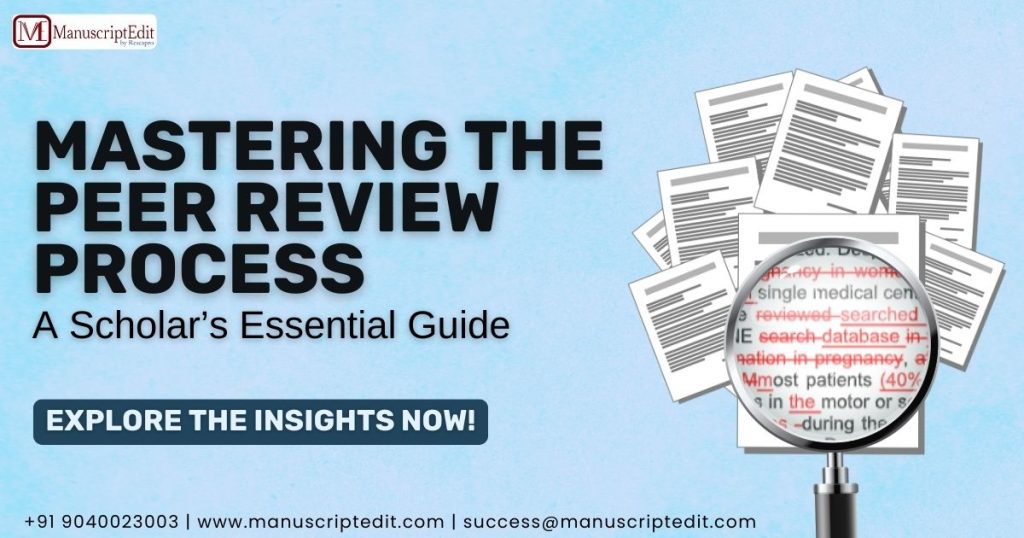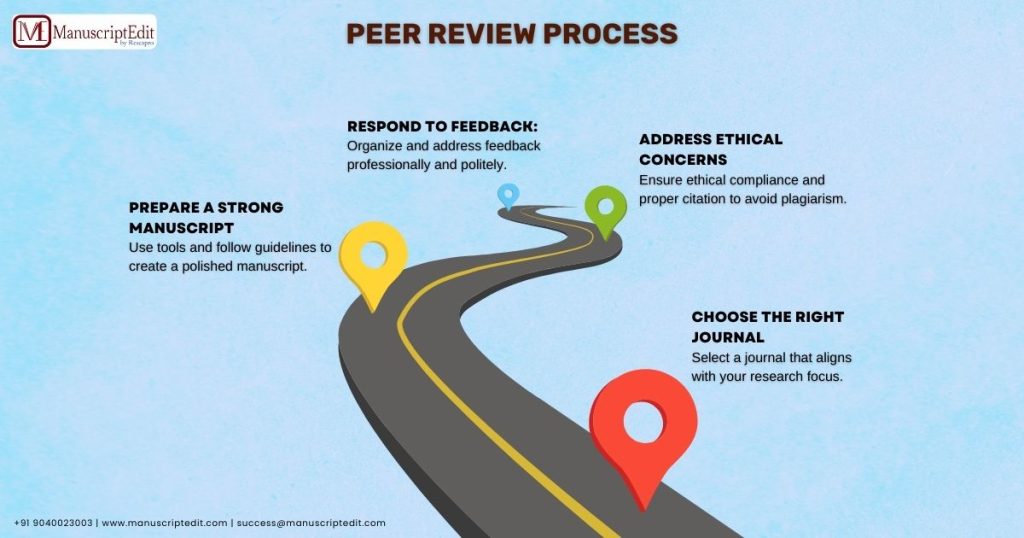|
Getting your Trinity Audio player ready...
|

Did you know that, as per The Journal Publications, more than 1.8 million peer-reviewed articles are published every year across the globe, and out of all the submissions to top-tier journals, only 10% find their way into print the first time around? And only 7% of papers rejected are returned without amendments.
Elsevier data indicates that acceptance rates for peer-reviewed journals globally average out at about 30%. One of the bases of scholarly publishing is that the peer review process ensures that a work meets the highest levels of quality. To many researchers, however, it remains a nervous experience they can’t avoid. Afraid of and Confused about Peer Review? Understanding the sensitivities of peer review could be a great way to get your paper accepted.
Peer review is when experts study a research paper for whether it is good, original, and relevant before getting published. Scientific Reports operates on a single-blind peer review process. Here, the reviewers know the identities of the authors but not vice versa.
Here in this blog, we look into the details of how the peer review process operates, we will also uncover the importance of self-archiving, often simply referred to as the “green option,” in boosting accessibility. By the end you will have a better insight about how to successfully navigate through peer review while increasing the potential readership of your work.
Why is Peer Review Process important?
Peer review is the process where experts from a particular field examine, critically, the quality, truthfulness, and validity of the work done by any researcher before it is published. The process generally checks the work’s originality, how sound the methodology is, the validity of the output, and the contribution given by the work to a particular field.
It allows research experts to review the conducted studies. This process also helps researchers further enhance their ideas through very constructive feedback, which keeps improving one’s work.
It also has gate-keeping functions to prevent unsubstantiated claims or badly conducted studies, as they can mislead other researchers or the public. It allows identifying creative and impactful research that creates a positive influence for enhancing the field.
Although peer review is critical, it also has problems with bias, conflicts of interest, and publication delay. There is still improvement in terms of the increased transparency and efficiency of the peer-review process. Despite all these disadvantages, peer review remains the core of scholarly communication. It protects the integrity and the progress of scientific research.
Important Stages of Peer Reviewing:
- Initial Screening: Editors check whether it is within the scope of the journal and reasonably within the basic standards. At this stage, about 30% are rejected.
- Reviewer Selection: Editors will send it to 2-3 experts for reviewing. Reviewers look at the paper on specific points such as methods, quality of data, and importance of the results.
- Reviewer Feedback: Reviewers give comments and suggestions in detail:
- Accept: This is rare and usually less than 5% for first submissions.
- Minor Revisions: Requires small changes (occurs in approximately 25% of submissions).
- Major Revisions: Requires significant changes (40% of submissions).
- Reject: Usually occurs to approximately 30% of submissions.
Final Decision: Editors take the final decision based on what reviewers say. For Scientific Reports, the acceptance rate is approximately 48%, which is much higher than some important journals due to its coverage of broader topics.
Reviewer Criteria:
- Originality: Does it present new ideas?
- Methodological Rigor: Are the methods robust and repeatable?
- Significance: Does the research add new, critical information to its field?
- Ethical Compliance: Were ethical guidelines followed?
Problems Research Scholars Face
Publishing in peer-reviewed journals has its own set of problems. According to a 2022 survey conducted by Taylor & Francis, the following were the issues found:
- Selecting a Journal: With over 33,000 peer-reviewed journals worldwide, the right selection is tough. Inappropriate selection is the reason for 15% of desk rejections.
- Manuscript Formatting: Mistakes in formatting or submission guidelines account for the rejection of 20% of the papers.
- Responding to Reviewer’s Comments: It is quite daunting for most scholars to write a compelling rebuttal letter, which delays resubmission.
- Transparency in Data: Journals are increasingly demanding data sharing; 35% of the respondents cited this as a challenge.
The Role of Self-Archiving and the Green Option
Self-archiving, or “green open access,” gives researchers the right to deposit a version of their paper into a repository, making it freely available to anyone. This is rapidly gathering momentum as universities and funding agencies increasingly emphasize open science.
Advantages of Self-Archiving:
- More visibility: Studies have shown that self-archived papers receive, on average, 23% more citations.
- Many funders, such as NIH and European Research Council, demand open access.
- Researchers worldwide, at institutions unable to pay for subscriptions, will be able to read your article.
Choosing a Repository
- Institutional Repositories: Harvard DASH or MIT DSpace, for example.
- Subject-specific Repositories: arXiv (physics, mathematics), PubMed Central (biomedicine).
- General Repositories: Zenodo, Figshare.
Example
A 2021 paper that had self-archived in arXiv was downloaded 42% more in the first month compared to its counterpart that appeared in a journal.
Step-by-Step Guide to Succeed in Peer Review
- Choose the Right Journal: Make sure your research fits with what the journal focuses on. Tools like Elsevier’s Journal Finder can assist you.
- Prepare a Strong Manuscript:
Use tools like Grammarly to check your writing.
Carefully follow the journal’s formatting rules.
Address Ethical Concerns:
If needed, include details about IRB approval.
Make sure to cite correctly to avoid plagiarism.
- Respond Effectively to Feedback: Reply to each comment in an organized way.
- Use polite and professional language.

Success Stories: The Impact of Peer Review
- Case Study: A PhD student studying biochemistry had trouble when three journals rejected their work. After getting professional editing help and choosing the right journal, their paper was accepted by Scientific Reports and received 200 citations in two years.
- Statistical Impact: Wiley reports that papers that go through careful peer review get cited 32% more often than those that do not.
Quick Tips for Research Scholars
- Before Submission: Your manuscript should strictly adhere to all guidelines.
- During Peer Review: Be prepared to accept helpful feedback; that is where the learning begins.
- After Publication: Share your work on ResearchGate and LinkedIn to get more people reading it.
Knowing how the review process works in journals, such as Scientific Reports, is indispensable for any researcher who feels the urge to publish. Using this self-archiving and the green option ensures that many people see your work while adhering strictly to open-access rules.
Ready to master the details of academic publishing? Get in touch with us today for expert guidance on manuscript preparation, journal selection, and peer review support. Let’s take your research to the next level!






